Consider a neutron star with a mass equal to the sun, a radius of 10 km, and a rotation period of 1.0 s. What is the speed of a point on the equator of the star?
A solid sphere \( \left( I = \frac{2}{5}MR^2 \right) \) and a solid cylinder \( \left( I = \frac{1}{2}MR^2 \right) \), both uniform and of the same mass and radius, roll without slipping at the same forward speed. It is correct to say that the total kinetic energy of the solid sphere is
A 84.4 kg climber is scaling the vertical wall. His safety rope is made of a material that behaves like a spring that has a spring constant of 1.34 x 103 N/m. He accidentally slips and falls 0.627 m before the rope runs out of slack. How much is the rope stretched when it breaks his fall and momentarily brings him to rest?
Two equal-magnitude forces are applied to a door at the doorknob. The first force is applied perpendicular to the door, and the second force is applied at \( 30^\circ \) to the plane of the door. Which force exerts the greater torque about the door hinge?
A block is attached to a horizontal spring. The block is held so the spring is stretched and the block is released from rest, undergoing simple harmonic motion with a frequency of \( 2 \) \( \text{Hz} \). How long after release will the block first reach a point where it is momentarily at rest?
A string is wound tightly around a fixed pulley having a radius of 5.0 cm. As the string is pulled, the pulley rotates without any slipping of the string. What is the angular speed of the pulley when the string is moving at 5.0 m/s?
A simple pendulum consists of a sphere tied to the end of a string of negligible mass. The sphere is pulled back until the string is horizontal and then released from rest. Assume the gravitational potential energy is zero when the sphere is at its lowest point.
What angle will the string make with the horizontal when the kinetic energy and the potential energy of the sphere-Earth system are equal?
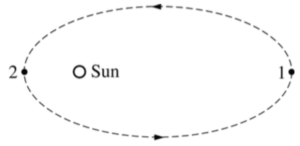
The elliptical orbit of a comet is shown above. Positions 1 and 2 are, respectively, the farthest and nearest positions to the Sun, and at position 1 the distance from the comet to the Sun is 10 times that at position 2. At position 2, the comet’s kinetic energy is
To increase the moment of inertia of a body about an axis, you must
A \( 200 \)\( \text{ lb} \) block is resting on a \( 30^{\circ} \) incline. The coefficient of static friction between the block and the plane is \( \mu_s = 0.8 \). Will the block remain at rest?
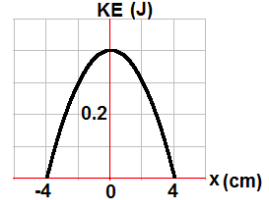
A 0.2 kg object is attached to a horizontal spring undergoes SHM with the total energy of 0.4 J. The kinetic energy as a function of position presented by the graph.
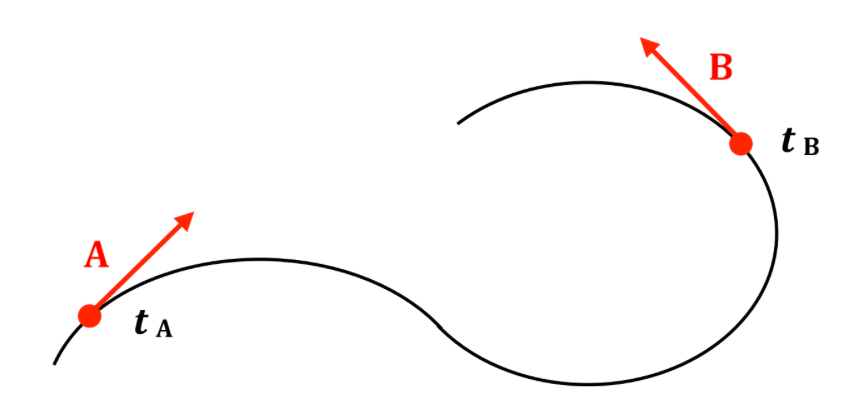 An object travels along a path shown above, with changing velocity as indicated by vectors \( A \) and \( B \). Which vector best represents the net acceleration of the object from time \( t_A \) to \( t_B \)?
An object travels along a path shown above, with changing velocity as indicated by vectors \( A \) and \( B \). Which vector best represents the net acceleration of the object from time \( t_A \) to \( t_B \)?
By continuing you (1) agree to our Terms of Use and Terms of Sale and (2) consent to sharing your IP and browser information used by this site’s security protocols as outlined in our Privacy Policy.
Quick Start Guide
AP physics 1, AP C, honors and advanced physics students.
Quickly filter questions by units and more.


Here’s guide to using 5 UBQ filters.
GQ = general question, MCQ = multiple choice, FRQ = free response.


Click the check or bookmark button.
Now you’ll be able to see completed or bookmarked questions at a glance!
Answer keys, personalized for you.
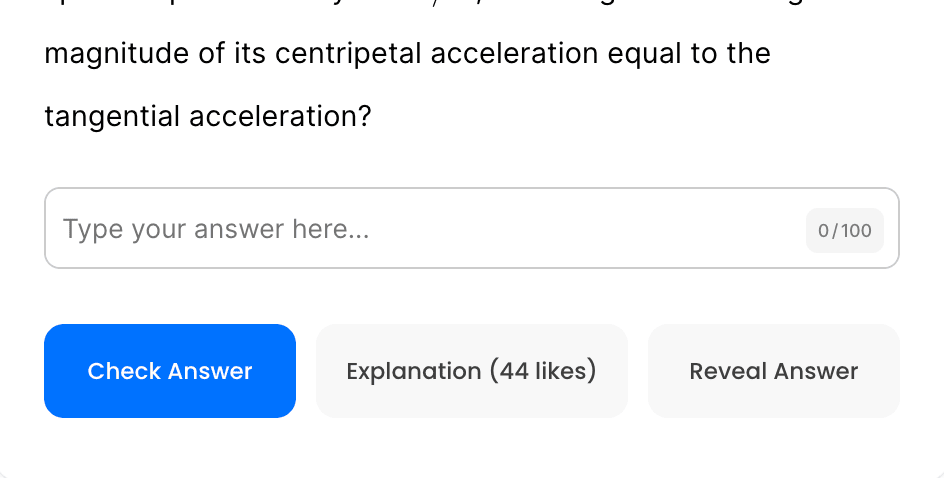
Phy will be responsible for grading your FRQs and GQs.
No more copy and pasting. Just solve and snap.
Questions for Mastery
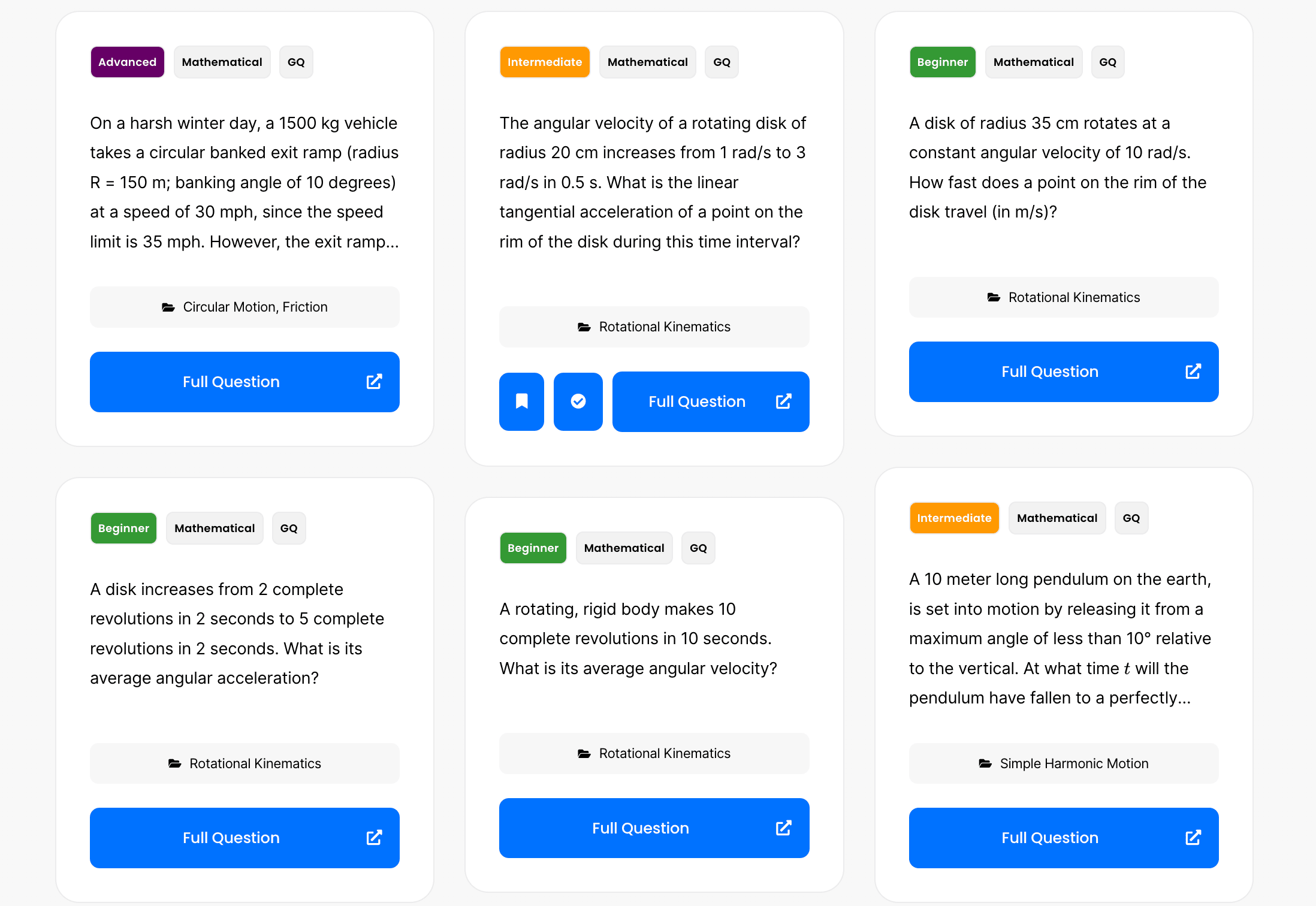
By continuing you agree to nerd-notes.com Terms of Service, Privacy Policy, and our usage of user data.